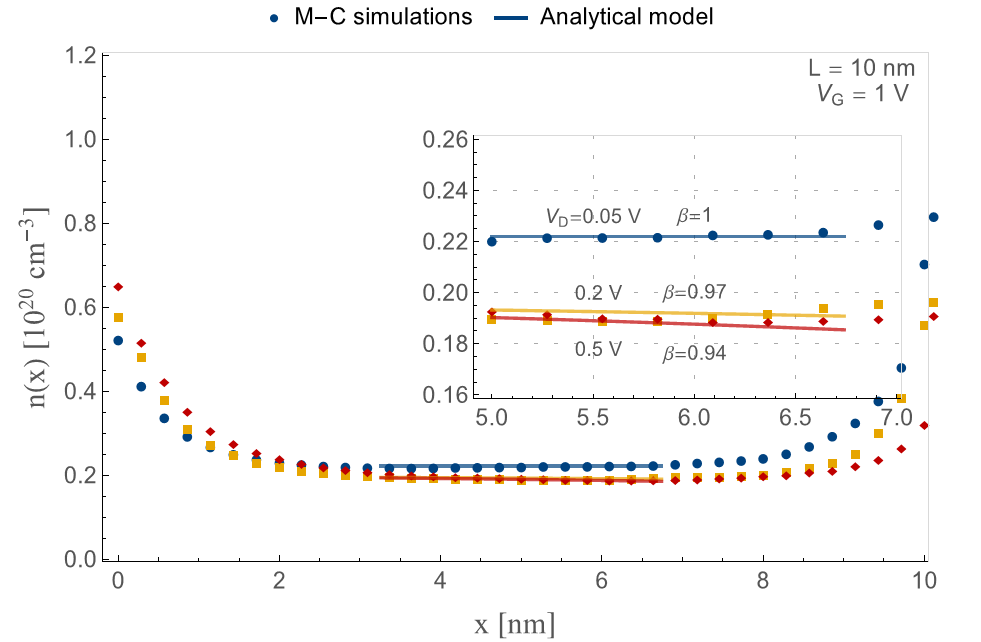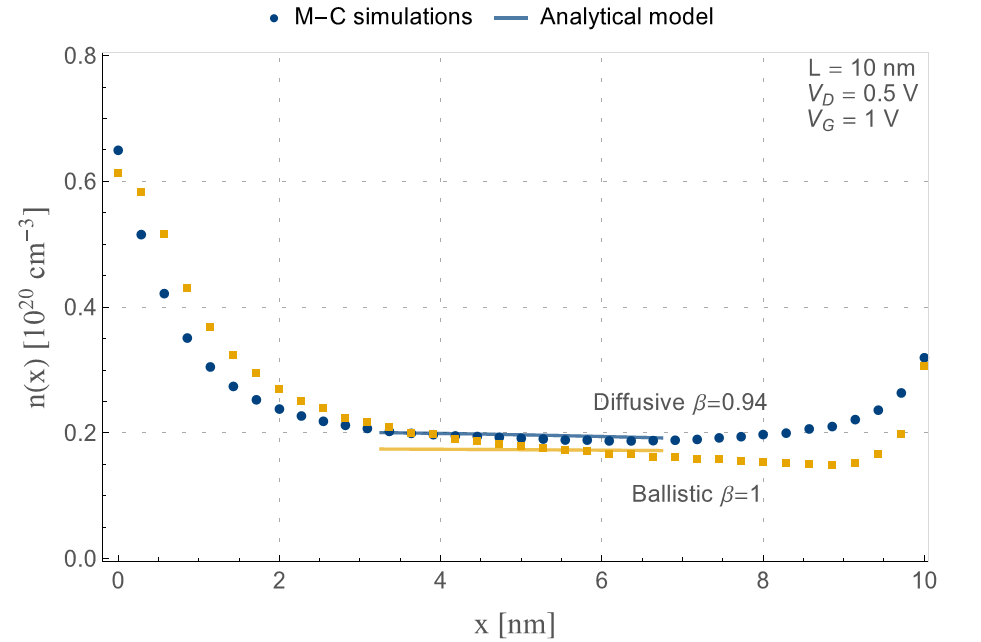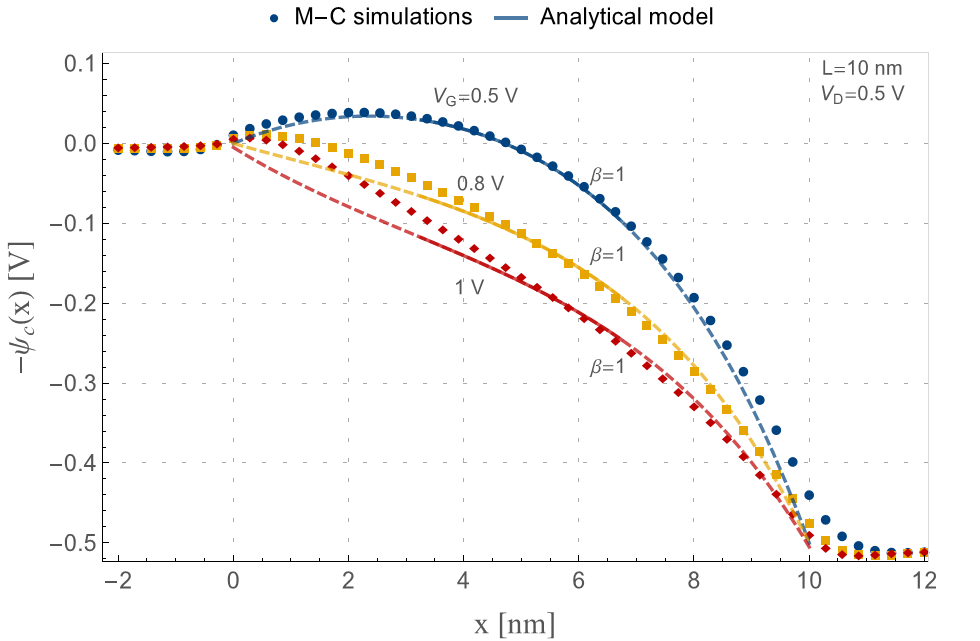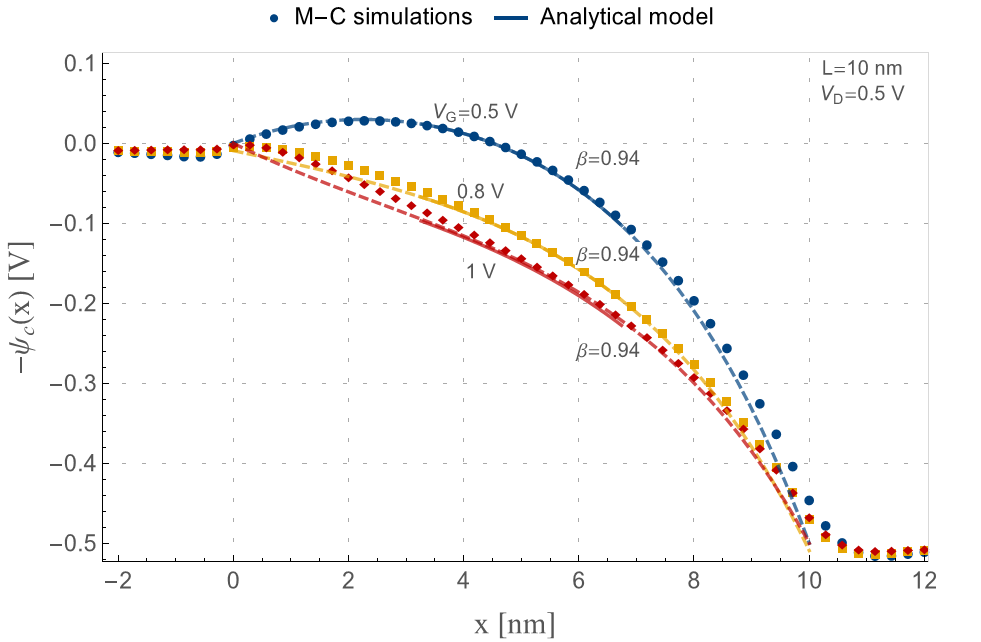MOS Transistors
Motivation
The scaling of device technologies poses new challenges, not only in circuit design, but also in device modeling, especially because of the short-channel effects and the emergence of novel phenomena like ballistic transport. Ballistic transport in a semiconductor device implies that the charge carriers (electrons) travel across the device under the influence of a driving force, without experiencing any collisions and scattering that impede their motion, resulting in high currents.
The quasi-ballistic devices, which lie on the continuum between the ballistic and the diffusive devices, pose their own modeling challenges: a model for the quasi-ballistic devices would have to remain continuous between the ballistic and drift-diffusion transport regimes. Despite the extensive body of work available in the literature, most models consist of either fairly complicated equations or purely empirical ones, that are of little use for an intuitive understanding and design of devices and circuits.
Objectives
- To understand the electrostatics in a ballistic channel, especially the influence of the gate, source and drain terminals on the channel.
- Model the carrier density and electron potential profiles in the channel of nano MOSFETs in a scalable manner between ballistic and diffusive regimes.
Results
We developed an analytical model of the profile of the channel charge and potential in quasi-ballistic double gate MOSFETs. The charge model is based on the premise of separating the charge density in the quasi-ballistic channel into two hypothetical components – one that is exclusively ballistic (collision-free), and the other, a collision-dominated component – but which are governed by the same electrostatics. Using the proposed charge model, and the double-gate MOSFET electrostatics, an analytical expression for the channel potential was derived. The equations so developed can be scaled between the quasi-ballistic and ballistic cases simply by varying the value of a single parameter (β) between 0 and 1.
|
Comparison of carrier density profile model with Monte-Carlo simulations for a |
|
|
|
|
|
|



